
Support Team
Feedback:
support@nextpcb.comKiCon Asia 2024, the KiCad conference celebrating the open-source EDA suite in the far East, was held for the second consecutive year in Shenzhen, China.
Co-hosted by HQ Electronics, the 2-day event saw 14 speakers from all over the world step up to the stage on topics covering advanced KiCad workflows, user experiences and professional use cases. This time, a full day of KiCad training sessions was held prior to the main conference, which was a welcome addition to this year's KiCon Asia.

In recent years, KiCad has witnessed a surge in downloads from Asia, particularly China, with users in the southern city of Shenzhen accounting for almost half of the entire Guangdong province user-base, positioning the silicon valley of hardware as the ideal location for the KiCon Asia conference.
As an open-source project driven by its community, KiCad leverages KiCon conferences as a platform to meet face-to-face and connect with real-world users. These events also facilitate a meaningful exchange of ideas and experiences, connecting users across different cultural and technical backgrounds within the KiCad ecosystem.
HQ (Huaqiu) Electronics, a leading electronics manufacturing platform, hosts the largest online community of electronics engineers in China with over 6 million users on the ElecFans platform. HQ Electronics also maintains the Chinese KiCad WeChat Channel, forums and technical discussion groups, facilitating the uptake of KiCad in the East. As well as being a Platinum KiCad sponsor, HQ Electronics has contributed two lead developers to the core team and has sponsored the "KiCad Like a Pro" book by Peter Dalmaris.
HQ NextPCB and HQ Online are the international faces of HQ Electronics, delivering and tailoring HQ Electronics' advanced manufacturing and supply chain services to users from over 166 countries around the world.
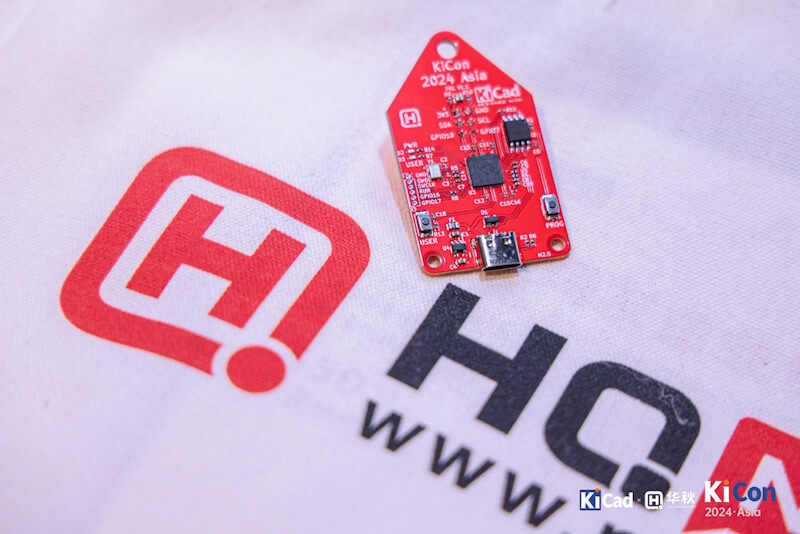
This year marks the second time HQ Electronics has co-hosted the Asian KiCad conference, bringing together hobbyists and experts to share their experiences and expertise.
The videos and presentation slides from the KiCon Asia 2024 talks will be added as they become available. In the meantime, here are the highlights. Use the menu to jump to a talk that interests you:
Seth Hillbrand - KiCad Lead Developer
Ahead of the main event, KiCad lead developer Seth Hillbrand lead a full day of much anticipated hands-on KiCad training sessions covering library management, custom field name templates, hierarchal labeling and advanced tips to speed up schematic capture and PCB layout. By the end of the day, participants successfully created the schematic and PCB layout for a datalogger and received a certificate of completion. Here's what one participant had to say (LinkedIn).


Wayne Stambaugh - KiCad Project Lead
Download Slides

In the traditional KiCon fashion, KiCad project lead Wayne Stambaugh kicked off talks with the KiCad Project Status Update. With KiCad 9 just around the corner, Wayne gave viewers a taste of what to expect and not to expect in the next major release and touched on features scheduled for KiCad 10.

Users can expect IPC support for schematic and board editor API, embedded worksheet files, improved ERC/DRC customization, output job manager, embedded fonts, embedded datasheets and many more quality of life improvements. OBD++ fabrication file export, PLY and improved STEP file export and much smaller installation sizes due to some clever compression methods were covered in more detail later in the conference.

A clear takeaway from Wayne's opening presentation was that big features aside, many of the improvements were focused on small optimizations targeted at enhancing user experience and addressing outlier use case scenarios, fully embracing the made for engineers by engineers concept.
Hubert Hu - HQ Electronics Project Manager
Download Slides

Hubert Hu, the main organizer for KiCon Asia and most HQ x KiCad collaborations, showed off HQ's KiCad Distribution designed for Chinese users. As well as being in the Chinese language, HQ's version adds support for installing plugins - something which was previously difficult due to local firewall restrictions, and integrated HQ's supply chain capabilities, connecting PCB design and manufacture with the supply chain for a seamless design to product experience.

Hubert's team also used the distribution as a playground for novel features such as dark mode for Windows and resolving compatibility issues specific to Chinese users. For the main KiCad branch, they have contributed a number of substantial features, namely OBD++ export, Zone Manager and Synchronization tools which will be available in KiCad 9.

Su Gongyu (苏公雨) - EETree Founder and CEO
Download Slides

In his speech, Su Gongyu, founder of EETree.cn, a paid learning platform for electronics education, explained his decision to use KiCad for all his PCB design training material, going against the common practice of Chinese universities.
Su also put forward his suggestions for a smarter, AI integrated ECAD with modular design and supply chain integration, further reducing the electronic engineer's administrative workload.Free, powerful, cross-platform and easy to use, KiCad is ideal for students without a license for other professional ECAD tools.

Su dedicated a whole 4 slides to express what he loves about KiCad

Some of the courses EETree offer using KiCad
Li Ning (李宁) - Wuhan University of Technology Associate Professor
Download Slides

Li Ning and his team were put to the test in the form of the Huawei challenge. Huawei, the Chinese telecommunications giant, sought AI-based component library generation with an accuracy rate of greater than 99%. Li talked about the challenges they faced and the considerations involved, finally ending with a successful prototype.

With tens of thousands of new electronic components introduced to the industry each year, it's about time an AI solution was used to improve the time-consuming and error-prone process of component library generation. Li's tool accurately highlights the correct areas required for extracting symbols and component data from the datasheet and extracts the individual parameters in table form.
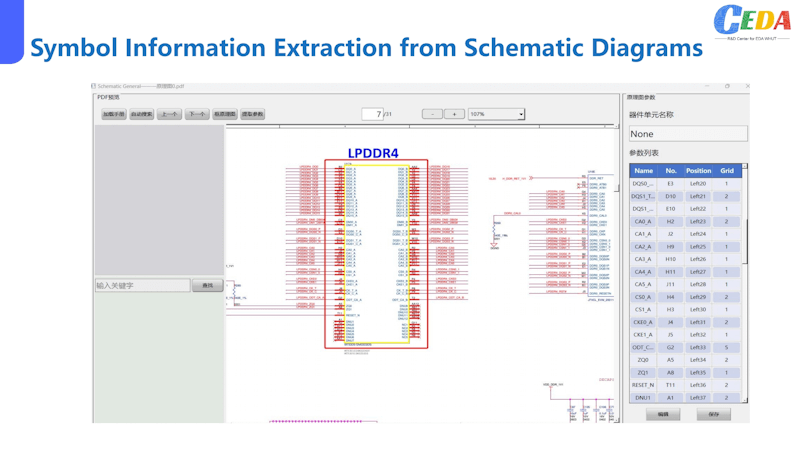
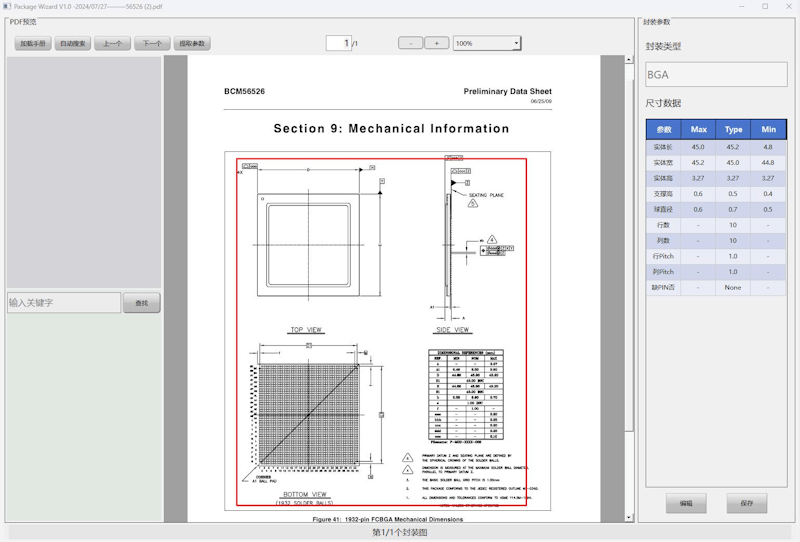
Alex Shwartzkop - KiCad Lead Developer
Download Slides

In Alex's presentation, he addresses the second most popular KiCad issue in the form of Finite Element Simulation (FEM) using KiCad to XAO file export, citing the advantages over previous workflows.

As mentioned in Wayne's Status Update, KiCad 9 will feature improved XAO file export, STL export and PLY export with 3D geometric information necessary for electromagnetic (EM) simulation. Alex demonstrated the workflow that leverages the XAO file export, which eliminates the need to use OpenEMS and manually specify various parameters.

Huang Meng Long (黄梦龙) - Wurth Elektronik QDC EDA Engineer
Download Slides
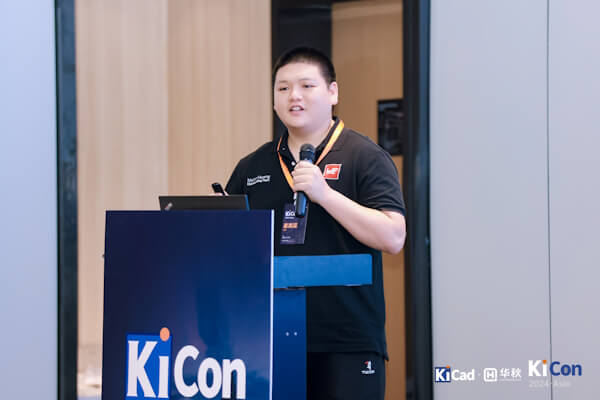
Earlier this year, Wurth Electronics committed to adding their entire product line to KiCad libraries, consisting of over 10,000 components. Wurth EDA engineer, Huang Meng Long, demonstrated the challenges they faced in bringing their existing library up to the high standards of KiCad libraries. He also showcased the Python scripts used to automate the process.


Wang Bo (王博) - DFRobot LattePanda Product Manager
Download Slides

DFRobot, a Shanghai-based company, specializes in robotics and electronics products for hobbyists, makers and educators. Wang Bo is the product manager for the LattePanda product line.
Wang highlighted DFRobot and KiCad's shared interest in the open-source philosophy. He explained that DFRobot uses the open-source EDA tool to create many of their hardware designs, which they then make publicly available to the community.

By using a freely available tool popular among hobbyists and professionals, DFRobot hopes that users can more easily learn about and integrate the designs into their own projects.

Ethan Chien - HQ Electronics KiCad Lead Developer
Download Slides

One of two KiCad developers funded by HQ Electronics, Ethan Chien described his journey developing the ECAD-Viewer tool, a free online viewer for KiCad that can be used without a KiCad installation. Based on KiCanvas, it integrates an AI assistant, 3D rendering, and a host of other usability features out of the box.

With AI integration, users can take advantage of various conveniences, instead of the traditional Google search for the specifications. The AI is specifically trained to recognize technical terms, keywords and abbreviations, vital for searching specifications, values and parts.

Gao Bo (高博) - Shenyang Polytechnic University Associate Professor
Download Slides

Gao Bo is both an entrepreneur and professor, teaching High Frequency Circuits and Computer Aided Engineering at the Department of Automation and Electrical Engineering at Shenyang Polytechnic, which often requires him to take students and interns under his wing. Gao also describes himself as a promoter of open source technology and workflows, which lead him to use and promote KiCad to his students.

Gao cites the unique challenges to his operations, that KiCad helps to resolve and shared some complex and novel designs made with the software. He also shared some simple scripts to imitate user friendly features from other EDA tools into KiCad.
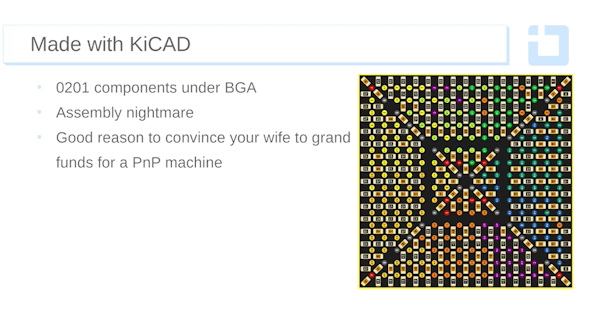
John Beard - KiCad Lead Developer and Librarian
Download Slides
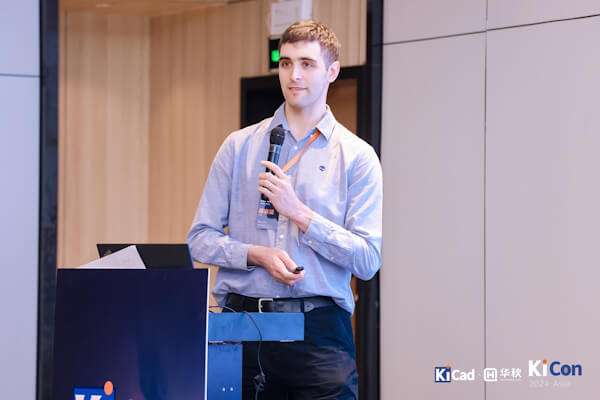
In a first for KiCad Asia, KiCad lead developer and librarian John Beard took the audience through a detailed dive into making symbol and footprint libraries based on the holy grail that is the KiCad Library Convention (KLC). KiCad's KLC is arguably the best set of guidelines and best practices for making footprints available to the public, making it possible for anyone to contribute high-quality and consistent libraries to KiCad.

Let's hope John's talk has inspired at least one person to become a KiCad librarian and thereby 'ruin their life' as John cheekily says.

Eric Zhuang - HQ Electronics KiCad Lead Developer
Download Slides
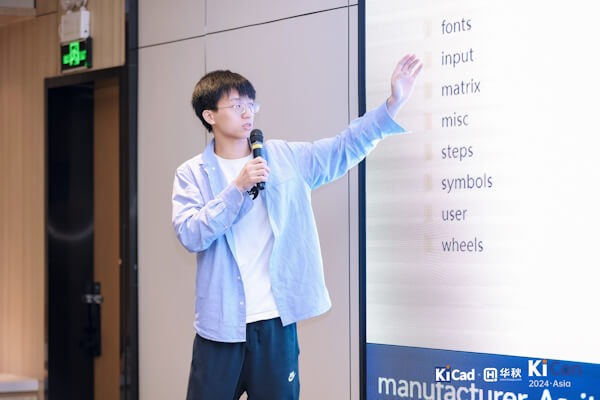
9 years after the initial request was made, Eric Zhuang, with the support of HQ Electronics' manufacturing engineers, successfully developed the ODB++ format export function for KiCad. The OBD++ format is often requested by some manufacturers but due to the lack of relevant expertise on the team, the request was put on hold until Eric took up the challenge. ODB++ export is expected to make it into KiCad 9 and is currently undergoing testing using the Gerber/ODB++ comparison feature from HQ Electronics' HQDFM software.


Liubo - M5Stack Product Manager and Senior Embedded Engineer
Download Slides

A software engineer at M5Stack, avid maker in his spare time and a long-term KiCad fan, Liubo colorfully expressed his enthusiasm for electronics and the stepping board that is KiCad. His projects and videos have inspired thousands to join the world of DIY electronics and he shared some tips for fellow hobbyists that do not have a professional electronics hardware background - one of which was to use KiCad for PCB design.

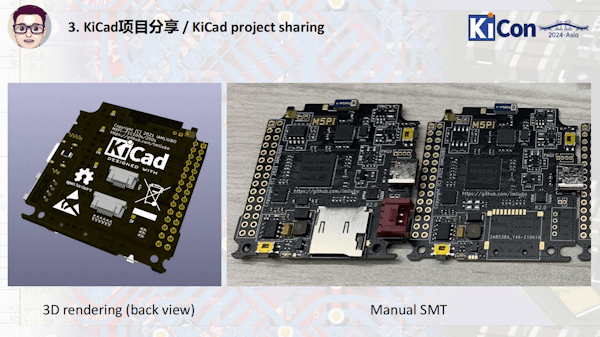
Seth Hillbrand - KiCad Lead Developer
Slides currently not available
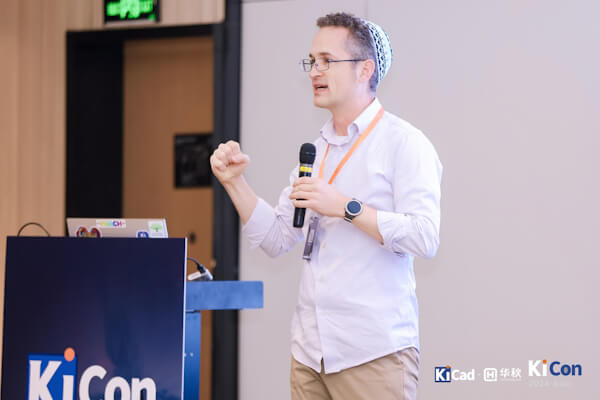
In a change of pace, Seth talked about the new compression methods used to deal with the hefty STEP files that make up the KiCad 3D models and 6.4GB of the KiCad installation. By identifying and removing innate redundancies in the STEP format, they were able to realize substantial file size reductions, in some cases by up to two-thirds without altering the format.

Furthermore, by leveraging STEPZ compression, the resulting 3D model files were reduced to an order of magnitude smaller than the original size. This optimization will appear in KiCad 9 and paves the way for the inclusion of more 3D models in the KiCad library and more efficient transfer of individual project packages.

Hubert Hu - HQ Electronics Project Manager
Download Slides

In this brief talk, Hubert demonstrates how engineers can import design files from Altium and the professional edition of EasyEDA into the KiCad environment. Hubert shows how to use the various built-in tools to import project, schematic and layout data and the key considerations to keep in mind when performing these cross-platform transfers.

Given that the vast majority of professional electronic engineers in China use Altium Designer, providing efficient import capabilities is crucial to enabling the migration to KiCad in the Far East.
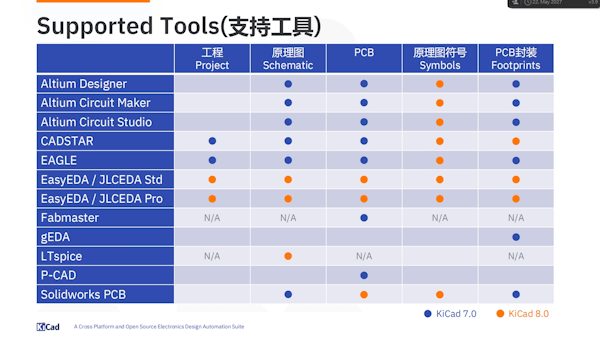
Wayne Stambaugh - KiCad Project Lead
Download Slides

Built by electronic engineers for electronics engineers, incorporating user feedback and addressing requests is core to the KiCad philosophy. This is supported by a robust feedback system. Wayne talks about how KiCad users can put forward their suggestions to shape the project's development according to their needs.

Paul Hamilton - Hacker
Download Slides

No KiCon Asia would be complete without an SAO hat soldering workshop. Engineers from across the globe at all skill levels came together to solder a small SAO hat.

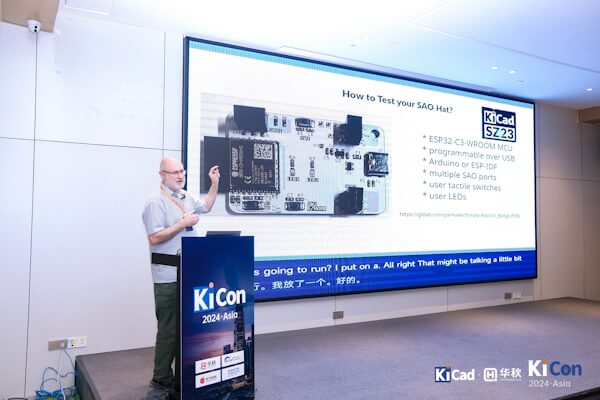
As part of the event, all KiCon participants received a SAO microcontroller board, designed by Paul and manufactured by HQ Electronics (NextPCB), which they could use to test the functionality of the assembled SAO hat and any hats they may be inspired to create in the future.




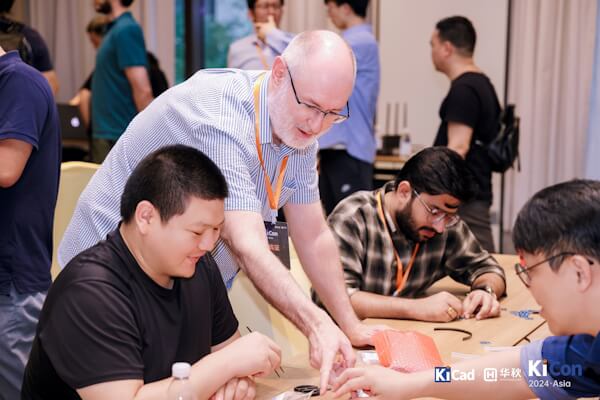

A big thanks to all the speakers, the KiCad team and community and HQ Electronics for bringing KiCon to Asia once more, and we'll see you at the next one!
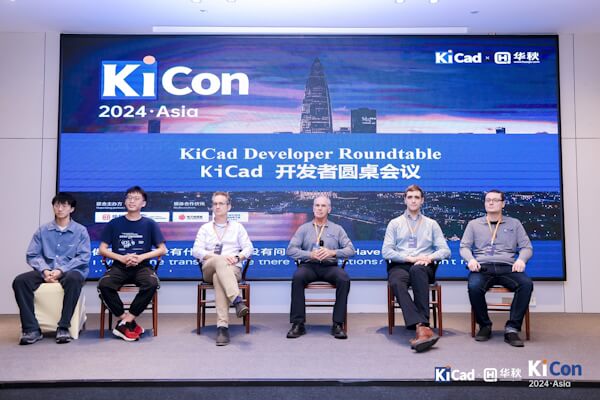







Still, need help? Contact Us: support@nextpcb.com
Need a PCB or PCBA quote? Quote now